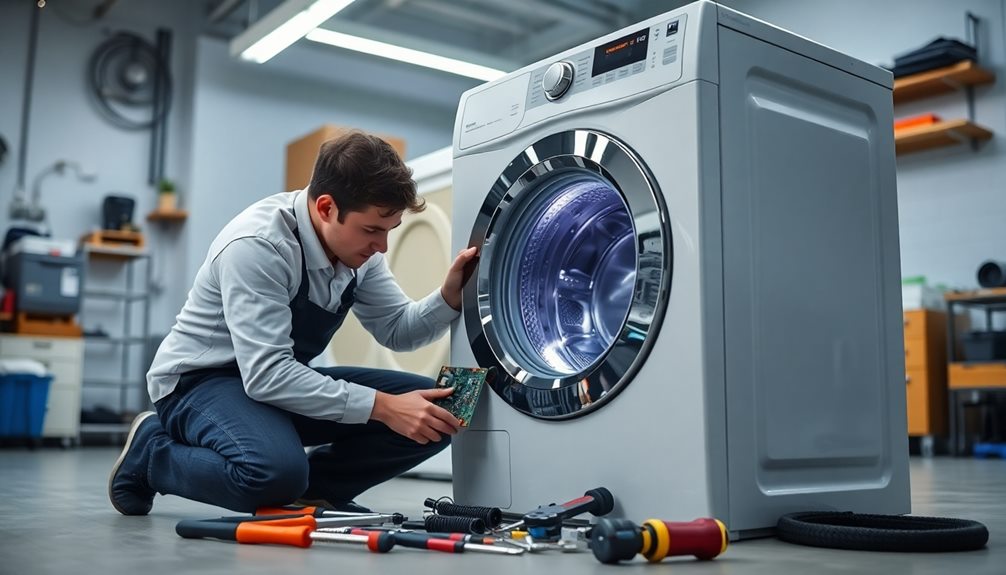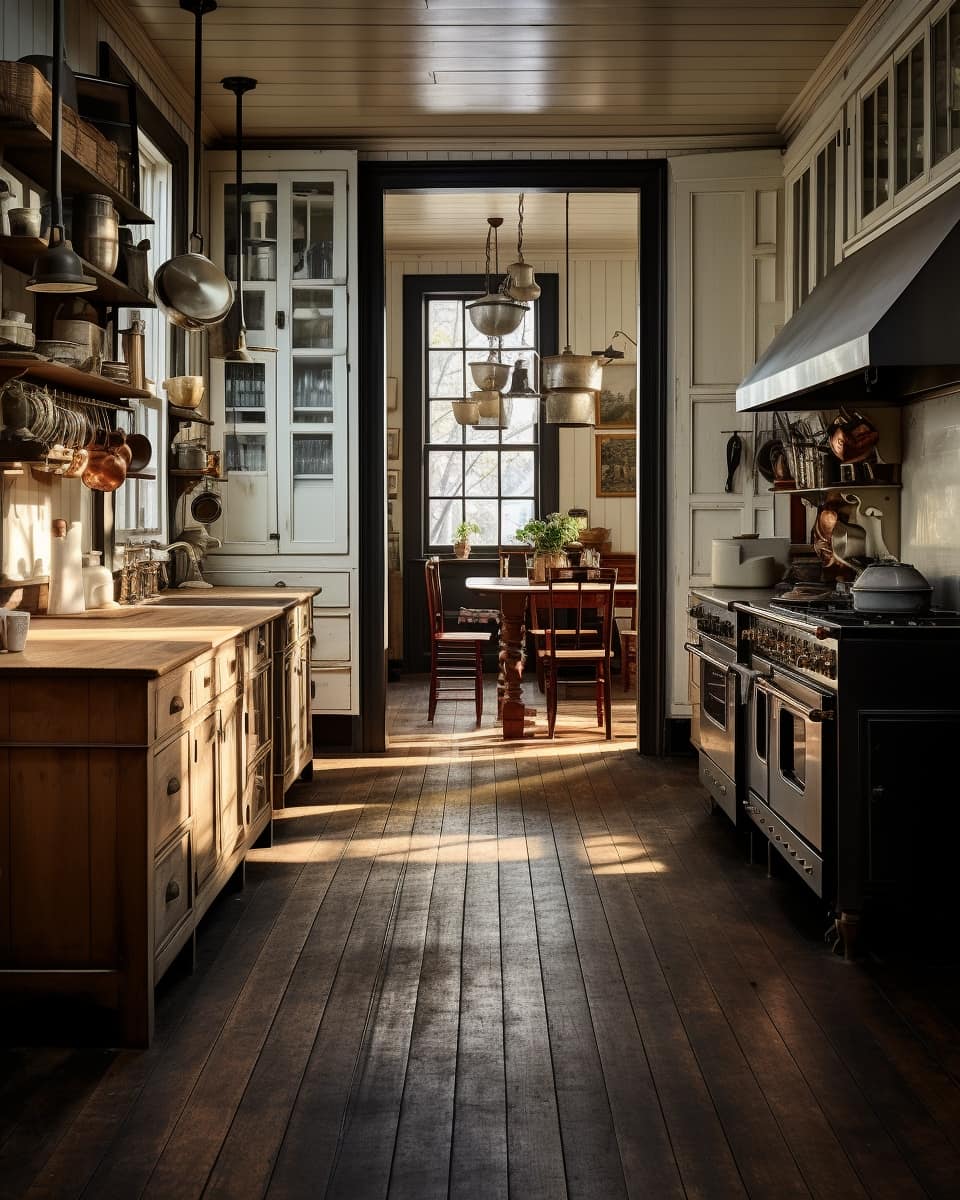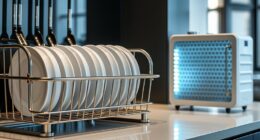Can UK appliances be used in the US? We have the information you are looking for.
In this article, we’ll delve into the voltage and frequency differences between the two countries, explore the electrical standards and regulations in both the UK and US, and discuss the compatibility of UK appliances in the US.
We’ll also provide tips for adapting UK appliances to the US electrical system and highlight the impact on appliance performance and lifespan.
Get ready to master the art of using UK appliances in the US!

Key Takeaways
- UK appliances designed for 230 volts may not function properly in the US due to the voltage difference of 120 volts.
- The difference in frequency (50 Hz in the UK, 60 Hz in the US) can affect the performance of UK appliances in the US.
- UK appliances typically have a three-pin plug, while US outlets require a two-pin plug, making them incompatible without an adapter.
- Proper usage of adapters and converters is crucial to ensure voltage compatibility and prevent damage or fire hazards.
Voltage and Frequency Differences
When considering whether UK appliances will work in the US, it’s important to understand the voltage and frequency differences between the two countries.
The UK operates on a voltage of 230 volts, while the US operates on a voltage of 120 volts. This means that UK appliances designed for 230 volts may not function properly when plugged into US outlets.
Additionally, the frequency of electricity in the UK is 50 Hz, while in the US it’s 60 Hz. This difference in frequency can also affect the performance of UK appliances in the US.
To address these voltage and frequency disparities, it’s necessary to use voltage converters. These devices can convert the voltage from 120 volts to the required 230 volts, allowing UK appliances to function correctly in the US.
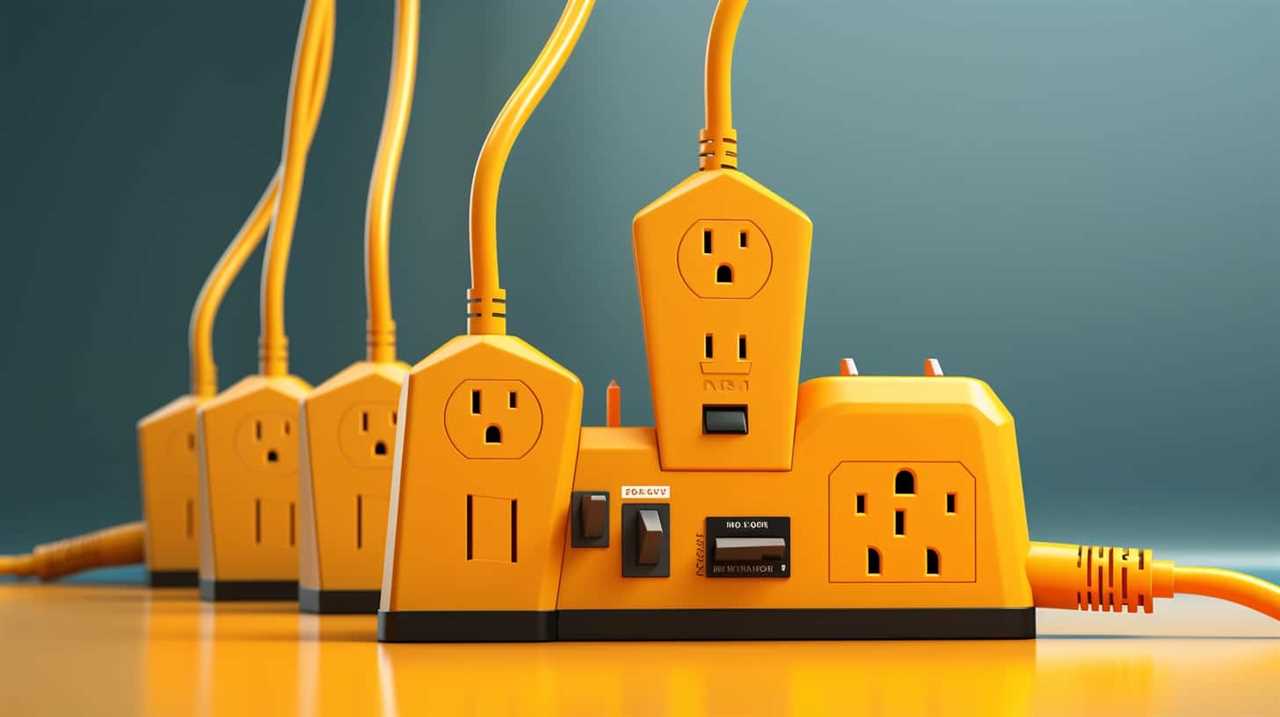
However, it’s important to note that not all appliances are compatible with voltage converters, so it’s crucial to consult the manufacturer’s instructions and understand voltage regulations before using them.
Understanding UK Electrical Standards
When it comes to understanding UK electrical standards, there are a few key points to consider.
Firstly, plug compatibility in the US may be an issue as UK plugs have three prongs, while US plugs have two.
Additionally, there’s a voltage difference between the two countries, with the UK operating on 230 volts and the US on 120 volts. This means that UK appliances may not work properly without the use of an adapter or voltage converter.
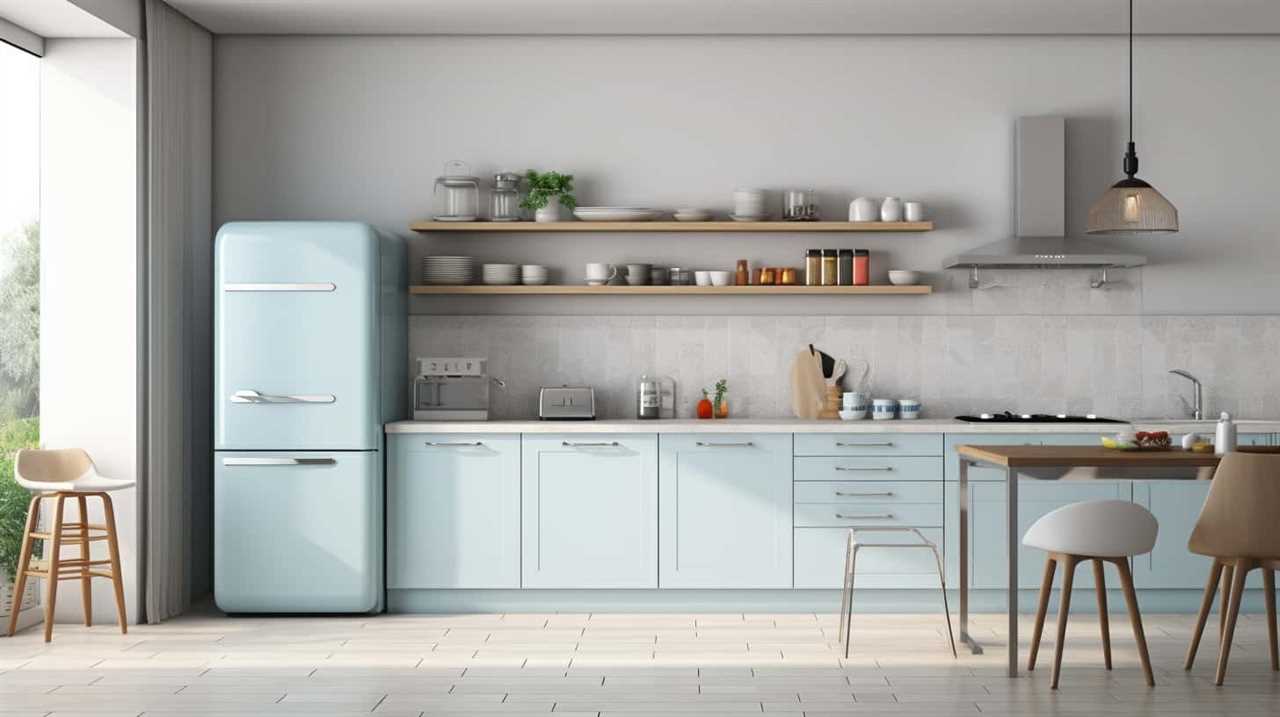
Plug Compatibility in US
We found that UK appliances may not work in the US due to plug incompatibility, as our electrical standards differ. UK appliances typically have a three-pin plug, while US outlets require a two-pin plug. To better understand this issue, let’s take a look at the table below:
| UK Plug | US Plug | Compatibility |
|---|---|---|
| 3-pin | 2-pin | Incompatible |
As shown in the table, the difference in plug design makes UK appliances incompatible with US outlets. This means that even if you were able to physically plug in a UK appliance in the US, it would not receive the necessary power to function properly. In the next section, we will explore the voltage differences between the UK and the US and how they contribute to the incompatibility of UK appliances in the US.
Voltage Differences Explained
To understand the compatibility issues between UK appliances and US outlets, it’s important to delve into the voltage differences and the underlying UK electrical standards. The UK operates on a voltage of 230V, while the US operates on a voltage of 120V. This difference in voltage can cause significant problems when attempting to use UK appliances in the US. In order to make UK appliances work in the US, voltage conversion techniques must be employed. These techniques involve using a voltage converter or transformer to adjust the voltage to the appropriate level. It’s also important to troubleshoot common voltage problems, such as power surges or fluctuations, which can damage appliances. Understanding these voltage differences and employing the necessary conversion techniques are crucial for ensuring the proper functioning of UK appliances in the US.
Now that we’ve explored the voltage differences and necessary conversion techniques, let’s move on to discussing the adapter requirements for appliances.
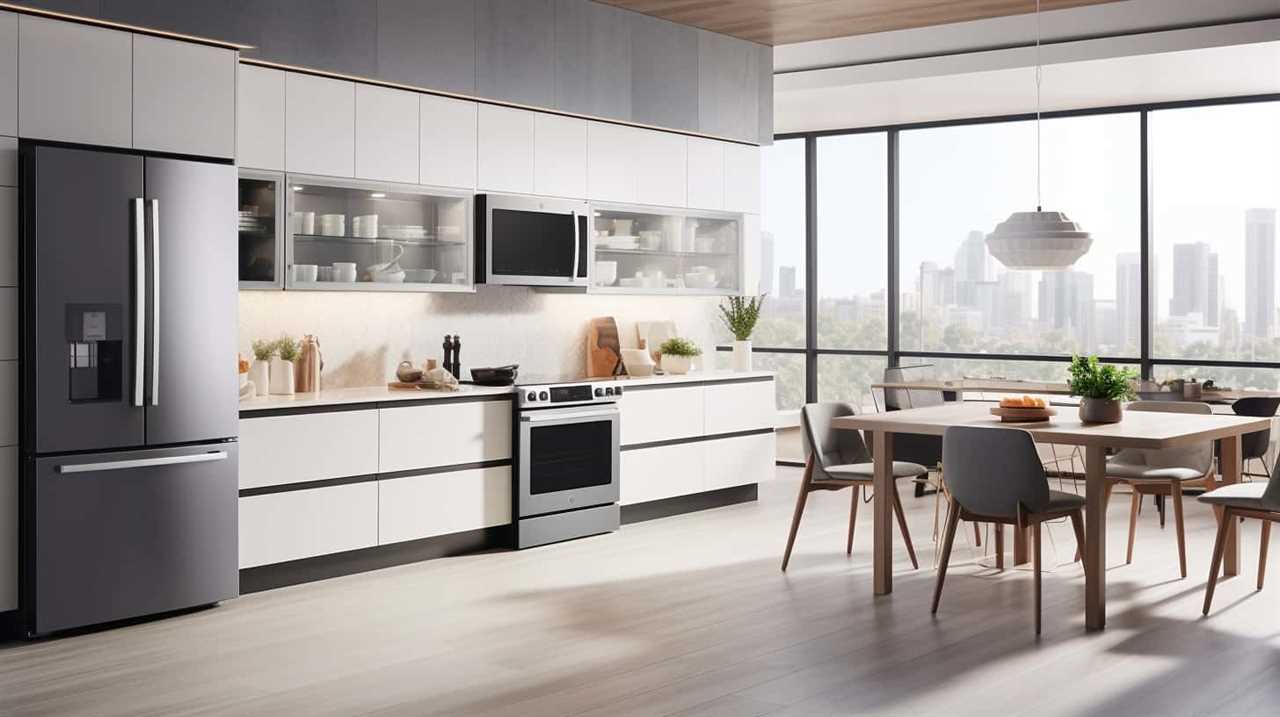
Adapter Requirements for Appliances
Now let’s delve into the adapter requirements for appliances, specifically focusing on understanding UK electrical standards. When using UK appliances in the US, it’s important to consider both adapter compatibility and voltage conversion. Here are three key points to keep in mind:
- Adapter Compatibility: UK appliances typically use three-pin plugs, while US outlets require two-pin plugs. To ensure compatibility, you’ll need a plug adapter that allows you to connect your UK appliance to the US outlet.
- Voltage Conversion: The UK operates on a 230V electrical system, while the US uses a 120V system. This means that UK appliances may not function properly without a voltage converter. A voltage converter will adjust the electrical current to match the requirements of your UK appliance, preventing any damage or malfunction.
- Safety Precautions: It’s crucial to choose a high-quality adapter and voltage converter to ensure the safety of your appliances and prevent any electrical hazards. Look for products that are certified and meet the necessary safety standards.
Understanding these adapter requirements and considering both adapter compatibility and voltage conversion will ensure that your UK appliances work seamlessly in the US.
US Electrical Standards and Regulations
Now let’s turn our attention to the electrical standards and regulations in the US.
Understanding voltage compatibility is crucial when it comes to using UK appliances in the US, as the US operates on a different voltage system.
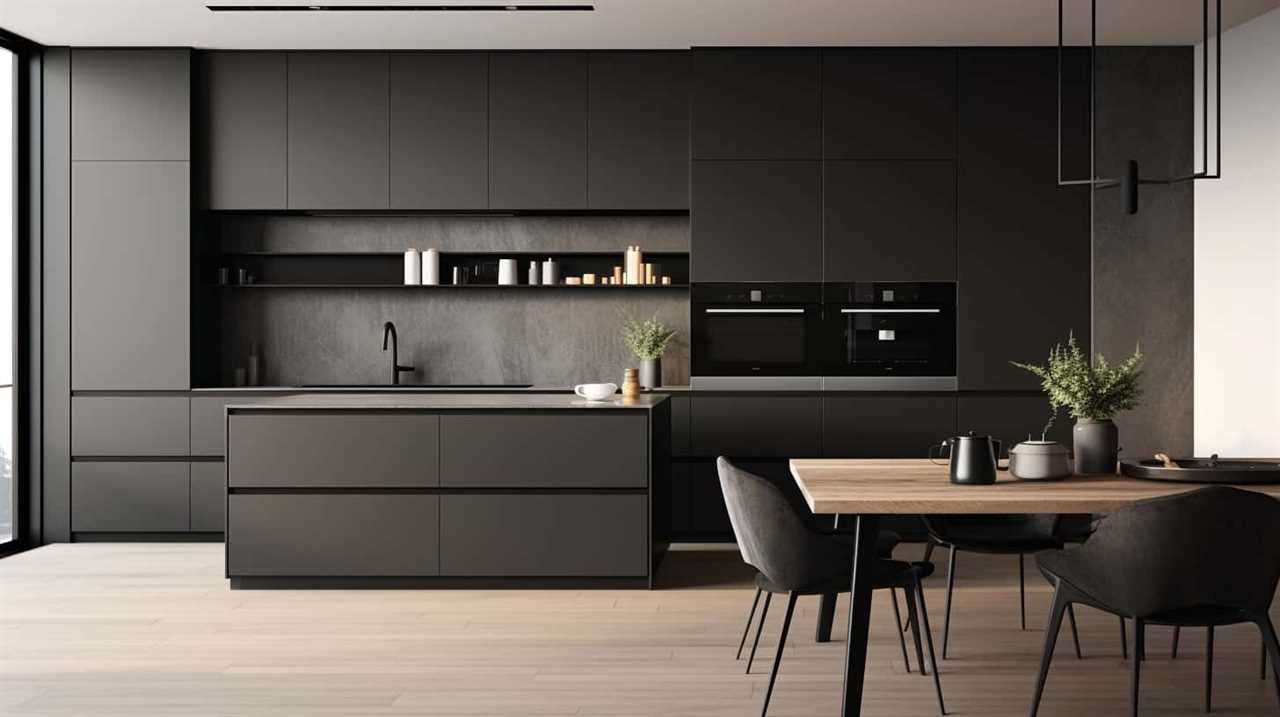
Additionally, it’s important to be aware of the safety regulations for appliances in the US to ensure compliance and prevent any potential hazards.
Lastly, using adapters and converters can be a solution to bridge the gap between UK and US electrical systems, but it’s essential to understand their proper usage to avoid any damage or safety issues.
Voltage Compatibility Explained
After researching UK appliances and their compatibility with US electrical standards and regulations, we found that understanding voltage compatibility is crucial. In the US, the standard household voltage is 120 volts, while in the UK, it’s 230 volts. This difference in voltage can cause issues when using appliances from one country in the other.
Here are three key points to consider regarding voltage compatibility:
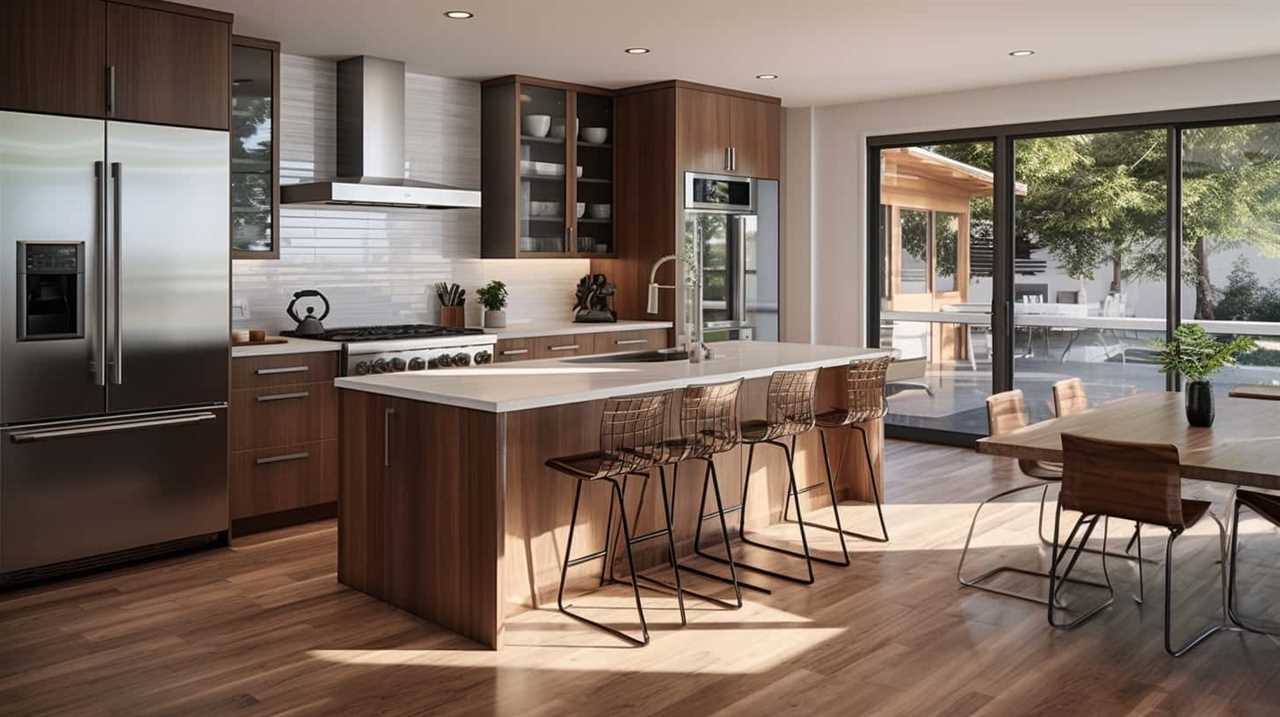
- Voltage Conversion Process: To use a UK appliance in the US, a voltage converter or transformer is required to step down the voltage from 230 volts to 120 volts. Conversely, a voltage converter is needed to step up the voltage from 120 volts to 230 volts when using a US appliance in the UK.
- Compatibility of US Appliances in the UK: US appliances designed for 120 volts may not work properly in the UK without a voltage converter. The higher UK voltage can damage the appliance or cause it to malfunction.
- Adapting Plugs and Sockets: In addition to voltage differences, the UK and US also have different plug and socket designs. Therefore, it’s necessary to use plug adapters or change the plug to ensure compatibility with the local sockets.
Understanding voltage compatibility and using the appropriate voltage converters or adapters is essential for safely using appliances from different countries.
Safety Regulations for Appliances
To ensure the safe use of UK appliances in the US, it’s important to understand and comply with the safety regulations for appliances set by US electrical standards and regulations. These regulations are designed to protect consumers and prevent accidents caused by faulty or poorly designed appliances.
When bringing UK appliances to the US, it’s crucial to ensure that they meet the electrical standards and regulations in place. This includes compliance with specific safety requirements such as proper insulation, grounding, and protection against electrical shock.
Understanding safety regulations and electrical standards compliance is essential to avoid potential hazards and ensure the safe operation of UK appliances in the US. It’s recommended to consult with a qualified electrician or appliance technician to ensure that all necessary safety measures are met before using UK appliances in the US.
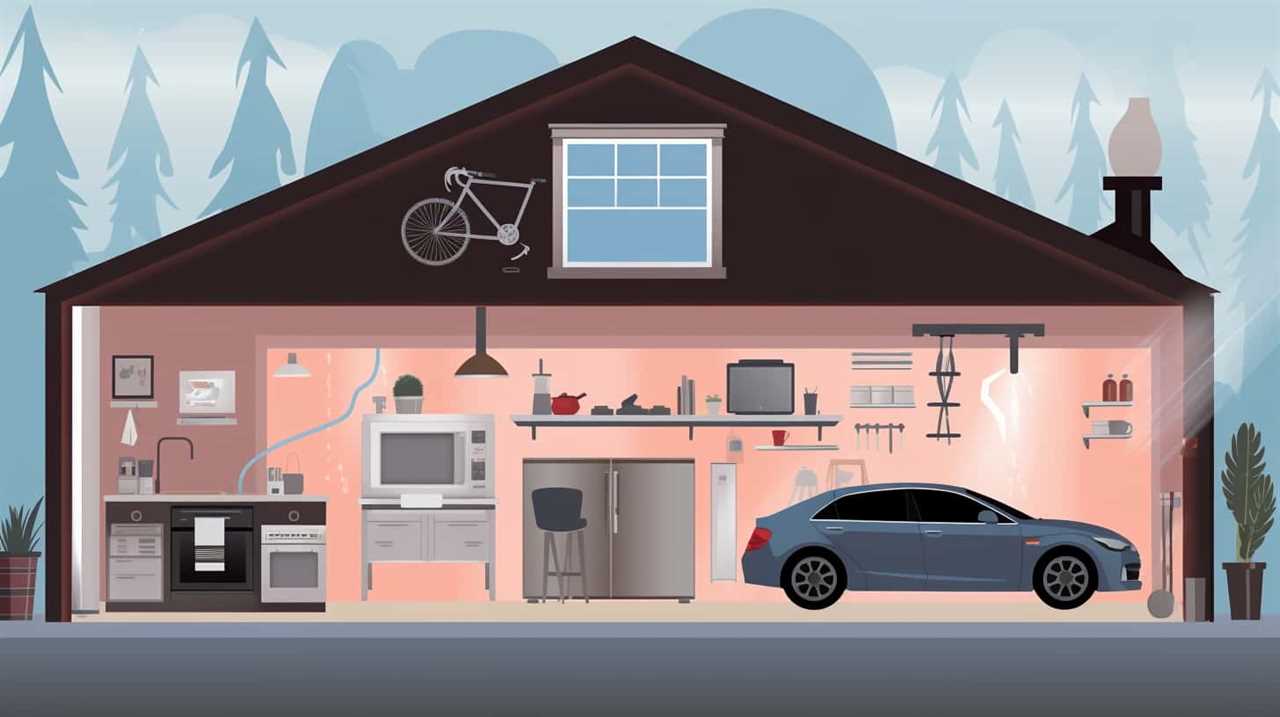
Adapters and Converters Usage
While using UK appliances in the US, it’s important for us to understand and comply with the usage of adapters and converters according to US electrical standards and regulations. Adapters and converters play a crucial role in ensuring electrical compatibility between different countries.
Here are three key points to consider when using adapters and converters in the US:
- Adapters: These devices allow you to physically connect your UK appliance to the US electrical outlets. They simply adapt the shape of the plug to fit the American sockets.
- Converters: Unlike adapters, converters also modify the electrical voltage to match the requirements of the UK appliance. This is important because the US operates on a different voltage system than the UK.
- Compliance with US electrical standards: It’s essential to use adapters and converters that meet the safety regulations and standards set by the US. This ensures the proper functioning of your UK appliances and avoids any potential electrical hazards.
Compatibility of UK Appliances in the US
One important factor to consider when bringing UK appliances to the US is the compatibility of these appliances with the electrical voltage and plug type used in American households.
The electrical voltage in the UK is 220-240 volts, whereas in the US it’s 110-120 volts. This voltage difference can cause compatibility issues if UK appliances aren’t designed to handle the lower voltage used in American households. In order to use UK appliances in the US, voltage conversion may be necessary.

This can be achieved through the use of a voltage converter or transformer. Additionally, plug type compatibility is also crucial. UK appliances typically use a three-pin plug, while the US uses a two-pin plug.
Adapters can be used to convert the plug type, ensuring that UK appliances can be safely and effectively used in American households.
Adapting UK Appliances to the US Electrical System
In order to successfully adapt UK appliances to the US electrical system, we’ll need to make use of a voltage converter or transformer. These devices are essential for ensuring that the electrical current and voltage supplied to the appliances are compatible with the US electrical standards. Here are three key points to consider when adapting UK appliances to the US electrical system:
- Use plug adaptors: UK appliances have different plug types compared to the US. Plug adaptors allow you to physically connect the UK appliances to the US outlets.
- Consider electrical conversion: The UK operates on a 230V electrical system, while the US uses a 120V system. To ensure proper functioning, you’ll need an electrical converter or transformer to convert the voltage to the appropriate level.
- Check appliance compatibility: Not all UK appliances are designed to work with the US electrical system. Before attempting to adapt them, verify if they can handle the voltage and frequency used in the US.
Transitioning into the next section about power converters and voltage transformers, it’s important to understand the differences between these devices and how they can be used effectively for adapting UK appliances to the US electrical system.
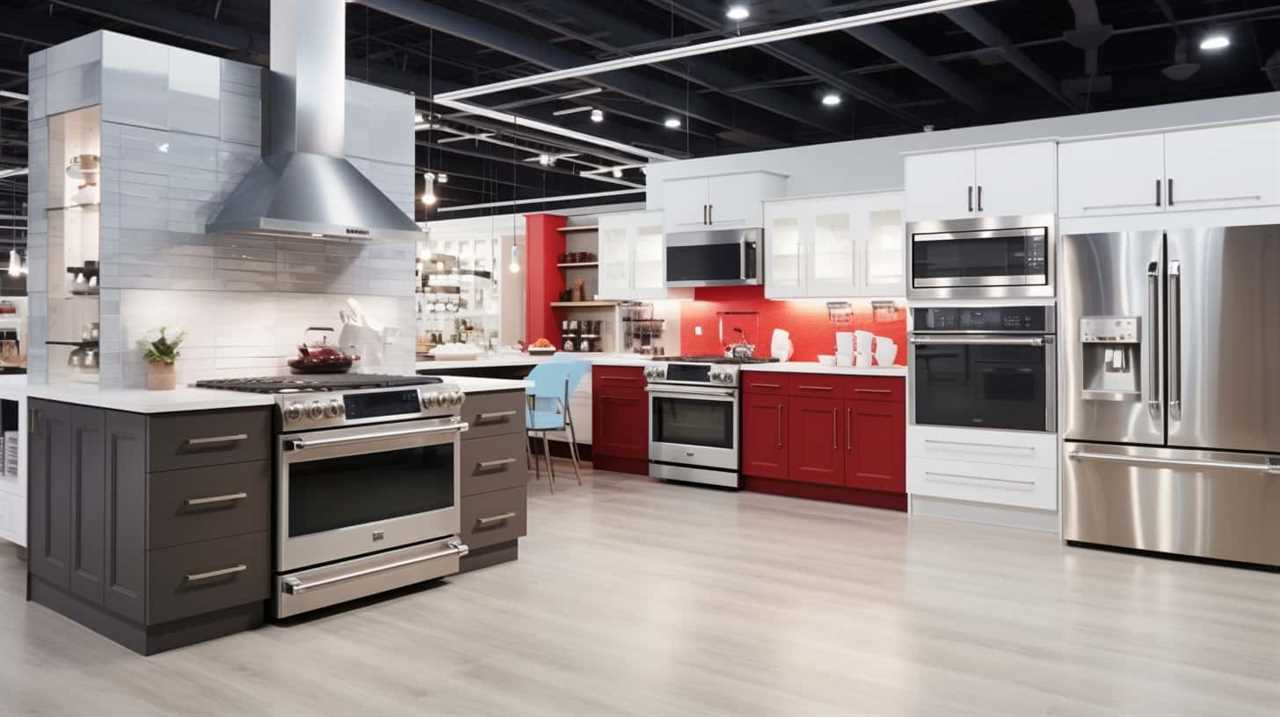
Power Converters and Voltage Transformers
Now, how can we effectively use power converters and voltage transformers to adapt UK appliances to the US electrical system? Power converter compatibility is a crucial factor to consider when using UK appliances in the US. It is important to ensure that the power converter you choose can handle the voltage and frequency differences between the two countries. Additionally, voltage transformer safety is paramount to protect both the appliance and the user. It is essential to select a high-quality voltage transformer that is designed to handle the power requirements of the appliance. To provide a clearer understanding, please refer to the table below:
| Power Converter | Voltage Compatibility | Frequency Compatibility |
|---|---|---|
| Converter A | 110V | 60Hz |
| Converter B | 220V | 50Hz |
| Converter C | 110V/220V | 50/60Hz |
| Converter D | 220V/240V | 50/60Hz |
| Converter E | 110V/120V | 50/60Hz |
Potential Risks and Safety Considerations
To ensure the safe and efficient operation of UK appliances in the US, it’s important to consider the potential risks and safety considerations involved. When using UK appliances in the US, there are several key factors to keep in mind:
- Voltage Differences: UK appliances typically operate on a voltage of 230V, while the US uses a standard voltage of 120V. Plugging a UK appliance directly into a US outlet can result in damage to the appliance or even pose a fire hazard.
- Frequency Variations: UK appliances are designed to operate at a frequency of 50Hz, whereas the US operates on a frequency of 60Hz. This difference in frequency can affect the performance and reliability of the appliance.
- Plug and Socket Compatibility: UK appliances have different plug types and shapes compared to the US. Using an adapter or modifying the plug may be necessary to ensure proper connection and prevent accidents.
Considering these risks and safety considerations when using UK appliances in the US is essential to protect both the appliances and the users.
Now, let’s explore the differences in plug types and outlets.
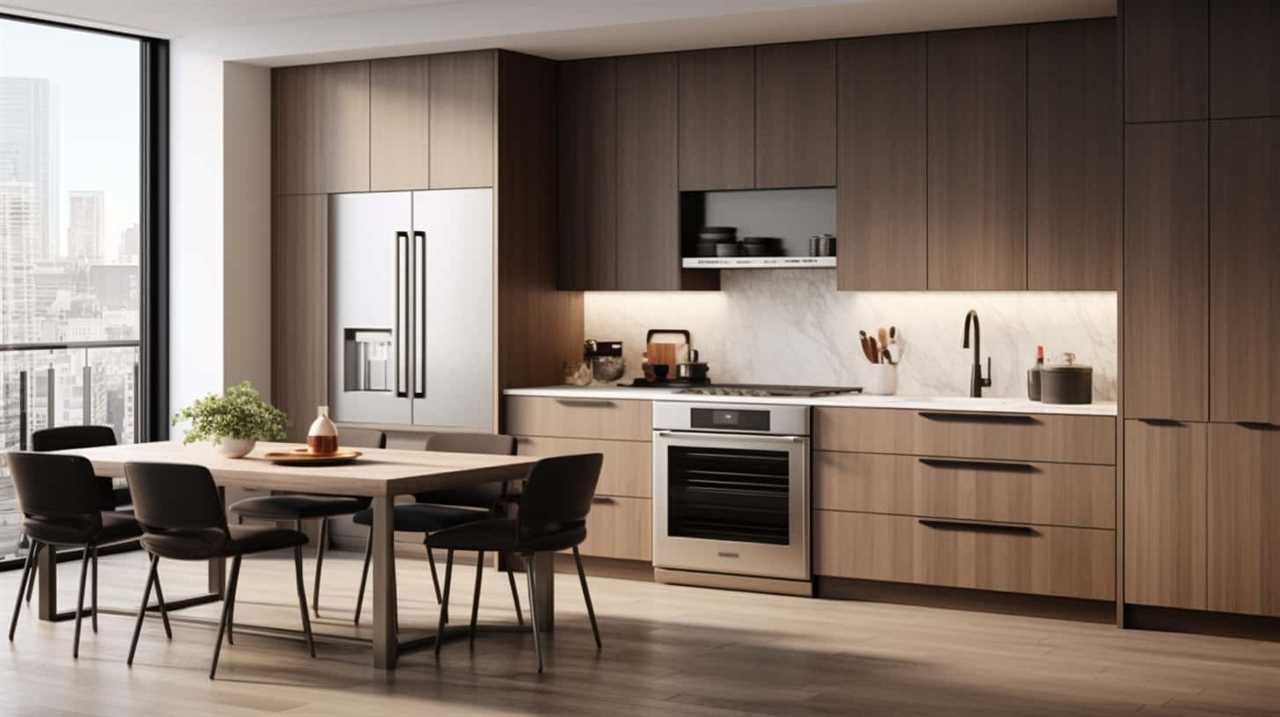
Differences in Plug Types and Outlets
Let’s now delve into the variances in plug types and outlets between the UK and the US. The main difference lies in the plug type compatibility. In the UK, the standard plug type is the three-pronged Type G, while in the US, the standard plug type is the two-pronged Type A or the three-pronged Type B. This difference means that UK appliances can’t be directly plugged into US outlets without an adapter.
Additionally, it’s important to consider the voltage difference between the UK and the US. The UK operates on a 230V voltage system, whereas the US operates on a 120V voltage system. This means that simply using a plug adapter won’t be sufficient to ensure the proper functioning of UK appliances in the US. Voltage conversion methods, such as using a voltage converter or a transformer, may be necessary to avoid damage to the appliances.
Understanding these differences in plug types and outlets, we can now explore how to use UK appliances with US power adapters.
USing UK Appliances With US Power Adapters
First, we need to understand how to use UK appliances with US power adapters. When using UK appliances in US homes, it’s essential to have the correct power adapter to ensure compatibility with US power outlets.
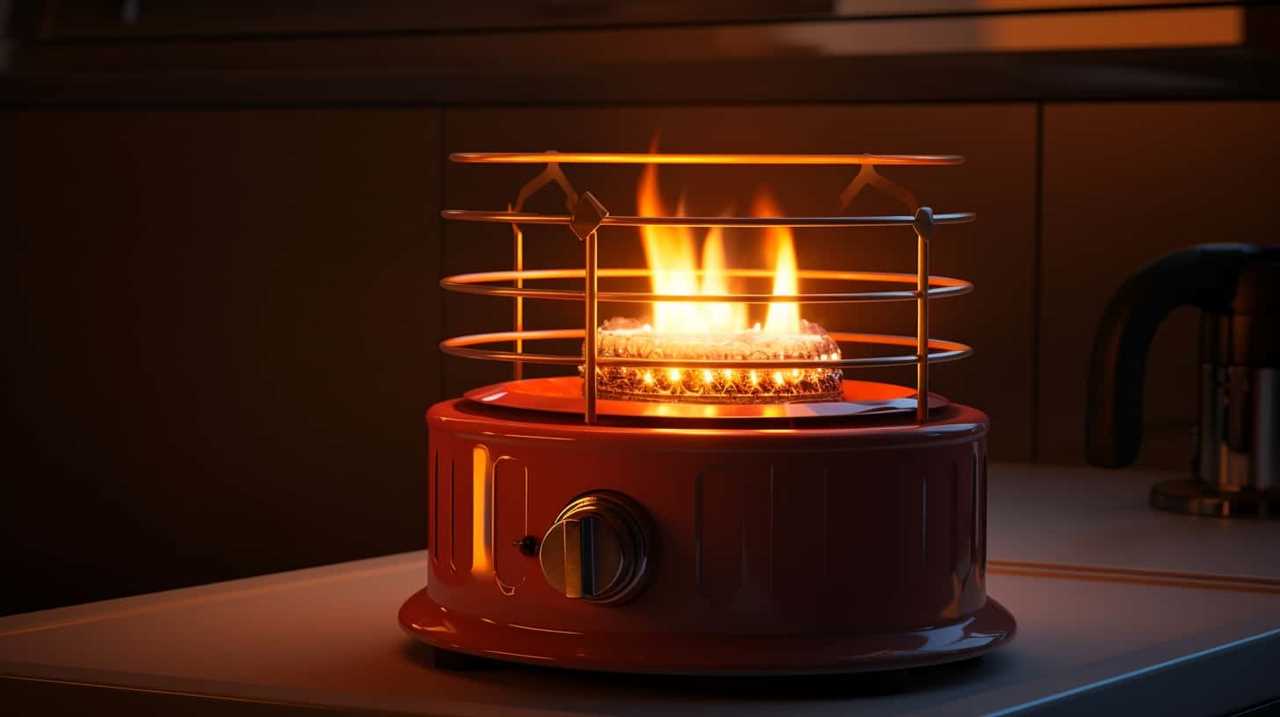
Here are three important points to consider:
- Check voltage compatibility: UK appliances typically operate on 220-240 volts, while US power outlets provide 110-120 volts. Ensure that your US power adapter can handle the higher voltage required by UK appliances.
- Verify plug compatibility: UK appliances use three-pronged plugs with rectangular pins, whereas US power outlets have two flat pins. Use a US power adapter that can accommodate the UK plug’s shape and size.
- Consider frequency differences: UK appliances operate on a frequency of 50 Hz, while US power outlets deliver a frequency of 60 Hz. Most UK appliances can handle the variation, but it’s important to check the appliance’s specifications to ensure compatibility.
Impact on Appliance Performance and Lifespan
When using UK appliances with US power adapters, it’s important to consider the impact on appliance performance and lifespan. Appliance compatibility plays a crucial role in determining how well a UK appliance will function with a US power adapter.
Different countries have varying electrical regulations, including voltage and frequency differences. UK appliances typically operate at a voltage of 220-240 volts and a frequency of 50 Hz, while US power outlets provide 120 volts at 60 Hz.
Using a power adapter to convert the voltage and frequency can affect the performance and lifespan of the appliance. The appliance may not operate at its optimal level, leading to decreased efficiency and potential damage.

It’s crucial to consult the manufacturer’s guidelines and ensure that the power adapter is compatible with the specific appliance to avoid any negative impact on its performance and lifespan.
Warranty and Support for UK Appliances in the US
Continuing our discussion on the impact of using UK appliances with US power adapters, it’s important to consider the warranty and support options available for these appliances in the US.
When purchasing UK appliances, it’s crucial to understand the warranty coverage provided by the manufacturer. Some appliances may have international warranties that offer coverage in the US, while others may only have warranties valid in the UK. It’s recommended to check with the manufacturer or retailer to confirm the warranty coverage for the specific appliance.
Additionally, it’s essential to consider the availability of customer service for UK appliances in the US. Some manufacturers may have customer service centers or authorized repair centers in the US, while others may require contacting customer service in the UK.

Being aware of these warranty and support options can help ensure a smooth ownership experience for UK appliances in the US.
Alternatives for UK Appliances in the US Market
How can we find suitable alternatives for UK appliances in the US market? When it comes to finding alternatives for UK appliances in the US market, it is important to consider the market competition and available options. To help visualize this, we have provided a table below showcasing some possible alternatives:
| UK Appliance | Alternative 1 | Alternative 2 |
|---|---|---|
| Oven | US Oven | European Oven |
| Washing Machine | US Washing Machine | Asian Washing Machine |
| Refrigerator | US Refrigerator | European Refrigerator |
In evaluating these alternatives, it is crucial to consider factors such as compatibility, voltage requirements, and warranty coverage. The US market offers a wide range of appliances that can meet the needs of consumers seeking alternatives to UK appliances. It is recommended to thoroughly research and compare the features, specifications, and reviews of different alternatives to make an informed decision.
Tips for Successfully Using UK Appliances in the US
To ensure a smooth transition, we recommend using a reliable voltage converter for all UK appliances used in the US. A voltage converter will allow you to safely use your UK appliances without the risk of damaging them or causing an electrical hazard.

Here are three important tips for successfully using UK appliances in the US:
- Choose the right voltage converter: Make sure to select a voltage converter that’s compatible with the specific voltage requirements of your UK appliances. The converter should be able to handle the wattage and voltage differences between the UK and the US.
- Follow the manufacturer’s instructions: Always read and follow the instructions provided by the manufacturer of both the appliances and the voltage converter. This will ensure that you’re using them correctly and safely.
- Check for compatibility: Before plugging in your UK appliances, check if they’re compatible with the US electrical system. Some appliances may require additional adapters or modifications to work properly.
Frequently Asked Questions
Can I USe a UK Appliance in the US Without Any Modifications?
Compatibility concerns and electrical safety precautions should be considered when using a UK appliance in the US without modifications. It is important to ensure that the appliance is compatible with the US electrical system to avoid potential damage or safety hazards.
What Are the Risks Associated With Using a UK Appliance in the Us?
The risks of using a UK appliance in the US include compatibility issues due to differences in voltage and plug types. It is important to consider these factors to avoid damaging the appliance or causing electrical hazards.
Do I Need to Use a Power Converter or Voltage Transformer to Use a UK Appliance in the Us?
We need to determine if a power converter is necessary to use a UK appliance in the US. Compatibility issues may arise due to differences in voltage and plug types between the two countries.
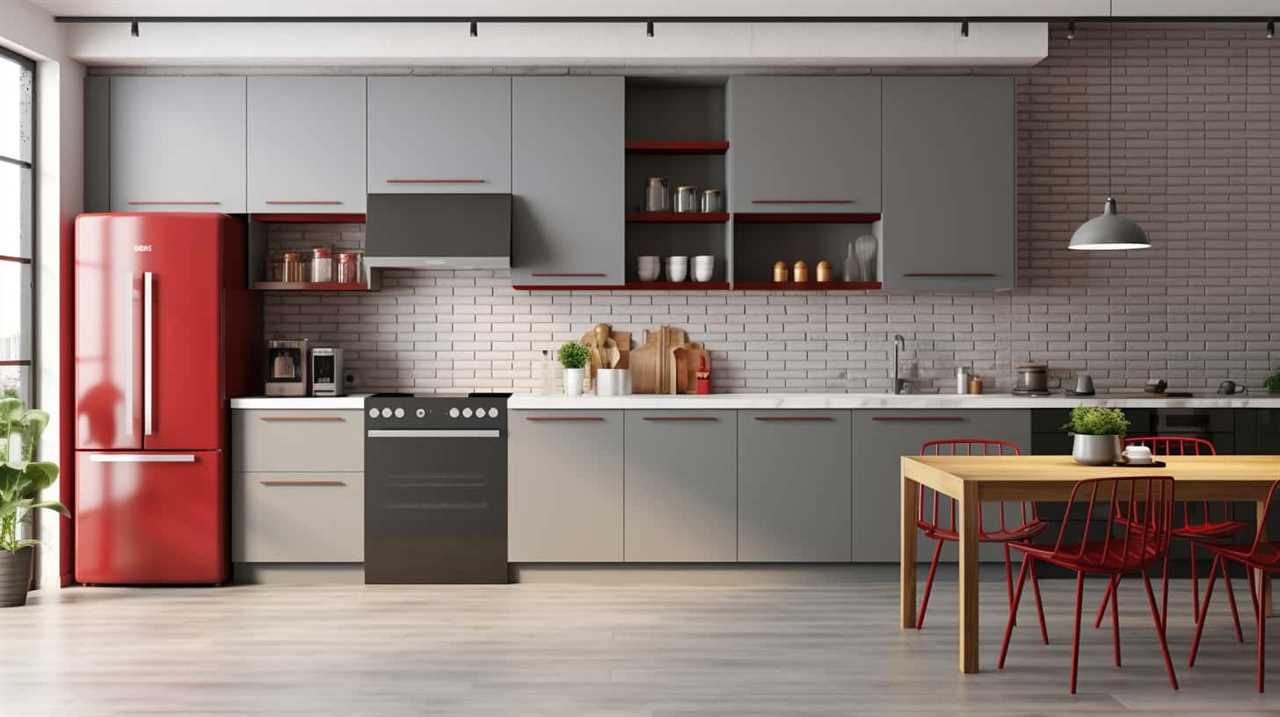
Will USing a UK Appliance With a US Power Adapter Affect Its Performance or Lifespan?
Using a UK appliance with a US power adapter may negatively affect its performance and lifespan. The voltage difference between the two countries can potentially cause damage to the appliance.
Are There Alternative Options Available in the US Market for UK Appliances?
Importing UK appliances to the US can be a cost-effective option. We are exploring the compatibility of UK appliances with US electrical systems. There may be alternative options available in the US market for UK appliances.
Conclusion
In conclusion, while it’s possible to use UK appliances in the US, it requires careful consideration and adaptation to the differences in electrical standards. The voltage and frequency variances can impact the performance and lifespan of the appliances.
However, with the right equipment and knowledge, one can successfully use UK appliances in the US market. It’s important to understand the warranty and support options available and consider alternatives if necessary.

Proceeding with caution will ensure a seamless transition and optimal appliance functionality.



